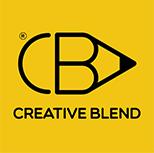It’s easy to think that establishing corporate identity is as simple as writing a mission statement on your About Us page and having a logo. Sure, that will tell everyone who you are and what you do.
Of course you’ll say your enterprise is the greatest thing since sliced bread. But your employees and audience are too inquisitive and perceptive to go along with your self-definitions.
No, your users and audience members need constant proof through actions to understand who you really are. And therein lies the challenge of building a corporate identity which actually helps you achieve your goals.
Your corporate identity must permeate your company culture. That’s what leads to a good brand identity which gives a strong “one of us” vibe, helping your audience understand what you offer them.
To that effect, every bit of presentation that your company puts out needs to include elements of your identity. Be it the colors in your brochures, the copy on your website, your blog posts or your videos, everything needs to speak the same way.
Yep, that’s hard alright. But certainly not an insurmountable task. And to help, we’re going to give you some of the best and most thoroughly tested design methodologies you can use to create your corporate identity.
You can shortcut this process by hiring experts to help you understand how to use your company’s unique strengths to build a lasting brand.
What is Corporate Identity?
Your company identity is not what you say your company is; it’s what the public thinks your company is.
Since you can’t just download whatever you want into people’s brains, corporate identity design is an intricate process. You not only need to mind how you look and what you say, but what you do in order to create your targeted identity.
To this effect, your corporate identity will include design, communications, and corporate behavior. Let’s take a look at each of them.
Corporate design:
Every visual element used to convey a message from your company falls here, including logo, fonts, typography, color palette, business cards, and so on. All your visual and contextual content should look and feel the same. Creating a style guide is the best way to make sure everyone’s on the same page.
Corporate communications:
Refers to how your company communicates with its employees, stakeholders, customers, and audiences. This can include memos, blog posts, website copy, videos, social media posts, and other written content.
Corporate behavior:
How members of your organization act within and outside your company premises. Corporate behavior demonstrates values, priorities, and goals. It is best illustrated via company culture, customer service, and corporate social responsibility initiatives.
Elements of Corporate Identity
Corporate behavior and communications are fluid fields which often rely on subjective interpretations. Visual design, on the other hand, is the most readily apparent aspect of corporate identity and thus needs to be well understood.
Your corporate identity elements list includes all the aspects of visual design used to communicate with your audience. These typically include five elements:
- Logo
- Typography
- Imagery
- Style Guidelines
- Employee Handbook
Now, most people understand identity in a human sense. That is, they can easily identify someone when a particular aspect is explained. A corporate identity is much the same. So, let’s see how the four elements above work in a human analogue.
Logo:
Your logo is your company’s signature and the most easily recognizable part of your corporate identity. While there are a lot of logo makers online that can spit out a design in mere seconds, it’s best you spend time working on this.
Think of an image that best represents your company’s goals. Yes, your logo needs to remind people of your goals first, then you. This is important because your audience needs to see you as a solution to their problems.
A great example of a logo done right is Nike. Their motto is “Just do it”, and the check mark illustrates it perfectly as it symbolises completion.
Typography:
Consists of fonts and typefaces. A font is a collection of characters with a similar design, while a typeface refers to specific design elements used in the font.
So, fonts have specific typefaces. Both are best thought of as your company’s accent. Your typeface includes design elements like specific usages of bold, italics, regular, light, and other typefaces.
Why is typography important? Because it helps cement your identity. Just like colors can inspire certain feelings, your fonts and typefaces can engender subtle ideas and notions.
It is best to select your typography based on who you are talking to. For example, the font Serif is ideal for companies with a traditional and sophisticated bent as it gives off an intellectual vibe.
Since each font represents a personality, consistent typography maintains brand identity. You don’t want people thinking you’ve gone from traditional to woke in the space of an email!
Imagery:
Corporate imagery covers all the visual elements your company uses to convey an idea. This can include graphics, photographs, product images, billboards, magazine ads, and social media posts. The role of corporate imagery is to create a brand image by sparking positive emotions.
Imagery is easily the most important element of corporate identity today. Your patrons need to touch, feel, and smell your product in order to get an idea of what they can expect.
In the pre-internet era, this wasn’t an issue as people had to walk into stores to buy stuff. But how can you convey a sense of connection when speaking to people online, who can’t physically inspect things? Powerful imagery can help you engage them emotionally and help them get a sense of what your company stands for.
For example, the fun, colorful design of Mailchimp exudes playfulness and builds on their “More than mail” motto. Conversely, the simple, minimalist design of Apple, dominated by white space, is all about sophistication and being focussed.
Style Guidelines:
So you’ve figured out how the visual part of your corporate identity will look. Now you need to make sure everyone abides by it. A style guide lays out all the dos and don’ts of visual design for your employees to maintain consistency.
Your style guide should address common as well as expected issues. For example, many designers will begin by confusing where to (and where not to) place logos. As most designs are creative endeavors, designers may be tempted to put the logo wherever they think they look good.
Likewise, new designers may use fonts they are familiar with. A style guide can help you avoid such scenarios. Here’s how to create the perfect style guide.
Employee Handbook:
While a style guide will ensure your designers stay on track, an employee handbook can help you with the behavior and communications part of your identity. A good employee handbook should start with a brief history of the company, its values, and what it’s trying to accomplish.
It should also detail company policies and give an overview of procedures and processes that the organization uses. Furthermore, it should cover employer policies against discrimination and for fair use.
Here’s an awesome guide to help you create your own employee handbook.
Types of Corporate Identity
The type of corporate identity you go with depends on your company structure. There are three options here: monolithic, endorsed, and branded.
Monolithic corporate identity:
Ideal for single companies with one type of product. Here, the entire company uses the same visual and communication style throughout its length and breadth.
A monolithic identity represents the perfectionist enterprise. The company’s sole focus is on building only one class of product/service, which makes it a thought leader and subject-matter expert in its domain. Examples of monolithic identity include Microsoft, Apple, and BMW.
Endorsed corporate identity:
Used when a corporation has a diverse set of companies under its umbrella, each with its own unique product and brand identity. The parent company is also a well-known player in the industry.
An endorsed identity allows the company to showcase various strengths and is typical of exploratory and/or predatory enterprises that like to own stakes in diverse markets. Examples of endorsed corporate identity include General Motors, Tata, and L’Oréal.
Branded corporate identity:
Closely related to endorsed identity in that it represents a corporation that owns many brands. But the parent company in this case isn’t known by the general public.
Branded corporate identity is ideal for enterprises that dabble in initiatives with a high risk of failure. Companies that buy failing brands or investors who invest in unproven startups fit the branded identity description. However, high risk isn’t a requirement: there are many corporations like Biotherm, Anheuser-Busch InBev, and Kraft that represent the branded identity.
Corporate Identity Examples
We’ve taken a look at the theory behind corporate identities, but how does it look in practice? Fortunately, we have many examples of brand identity design done right. Here are our top picks:
Headspace
The meditation app is well known for its exhaustive training material and sharp, succinct instructions. But they have also nailed their visual identity design. Everything from their typography to iconography, color palette, and choice of graphics portrays a fun, cheery experience.
Note the smiley face with closed eyes, which is visible throughout their web presence. This is a playful and simple way to impress the app’s mission: less stress and more peace of mind.
Key takeaway: An idea reduced to its simplest form is understood the best. Figure out what you’re trying to tell your audience, then express it as simply as you can. Next, design an identity around that idea.
Airbnb
While the site and app is best known for its online homestay booking platform, Airbnb actually started out as a tech service provider. The company overhauled its brand identity when it decided to enter the hyper-competitive travel market with the help of DesignStudios. They came up with the “belong anywhere” slogan. They also used a versatile color palette and a trendy ‘A’ logo to signify the universality of their mission.
Key takeaway: Logos are a great opportunity to deliver your core idea. Airbnb had a unique idea, and to make it work they needed a fresh visual design. The ‘A’ design is an amalgamation of their core goals and values, which are people, places, and love. Airbnb even explains how their logo was put together, helping a viewer connect with their mission.
Baas Architecture
Developed by Spanish designer Hector Gargallo, Baas Architecture’s identity is more of a sticker system. They use a simple layout of black and white stickers on cardboard which can be attached to any surface.
The design uses old-school typography to impress a grounded, mature feel upon the viewer. What’s more, the same design is used throughout their digital assets. All of their announcements and social media shares carry the same footprint.
Key takeaway: Baas is clearly capitalizing on the mad dash among brands to look creative and different. By going for the opposite of what their market is doing, Baas has created an identity that feels fresh.
Conclusion
Giving a human face to a brand has become an overreaching imperative in today’s hyper-competitive business environment. Not only does it help brands differentiate themselves, it makes them more approachable.
In other words, a corporate identity has become even more important than it already was. A strong, well thought-out identity can help your organization attract its tribe. It can also found deeper connections between members of your organization and those you serve.
The goal of any brand is to (finally) become a verb – something everyone uses to refer to the one thing your product does. But doing so is just about the hardest thing there is.
We at Creative Blend know how to build an unforgettable brand. We’ve helped some of the biggest government and private organizations develop truly memorable brands and we’ll be happy to do the same for you. Contact us to learn more.










